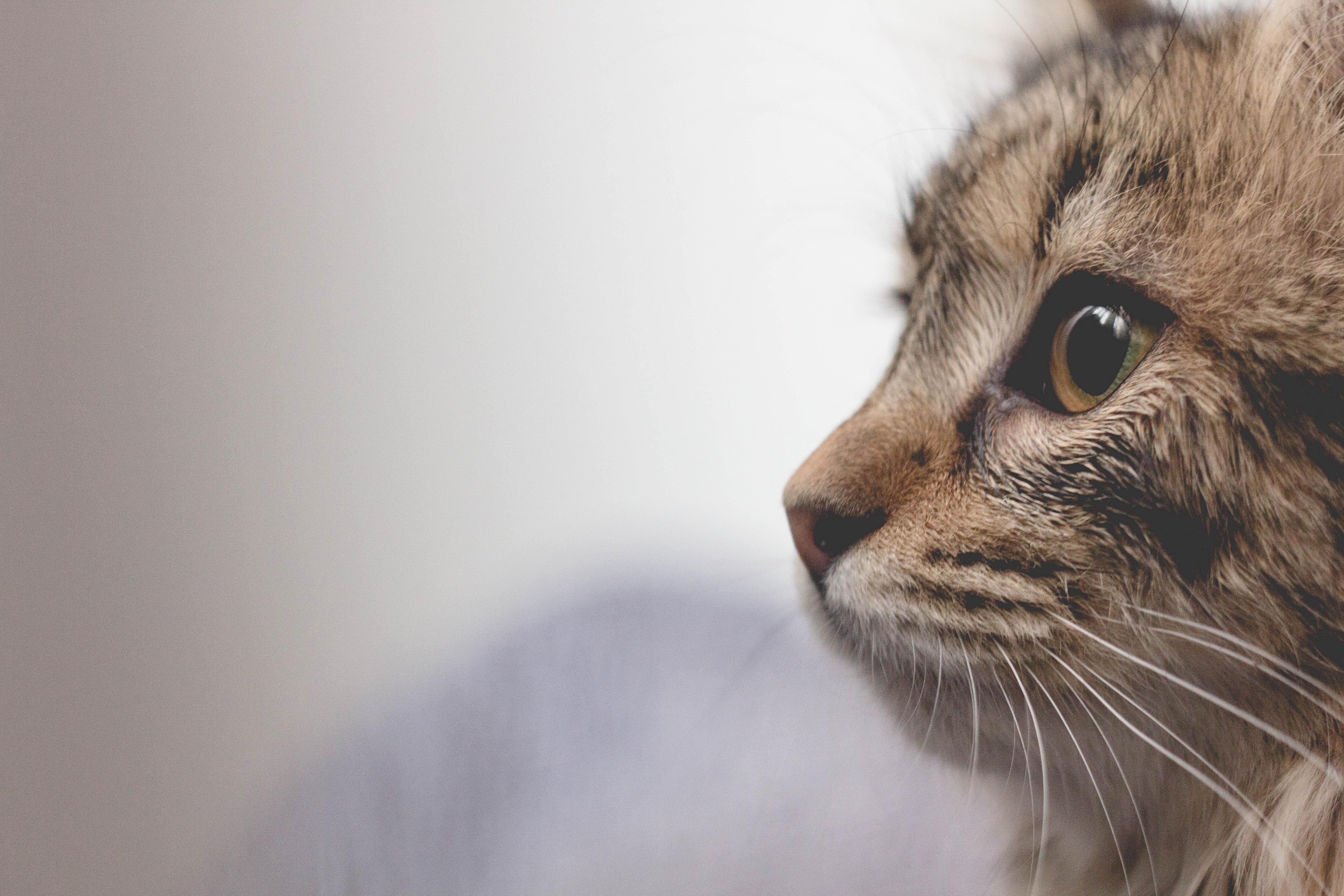November 4, 2020 |9 min read |Veterinarian Reviewed
Tapeworm in Cats

Written by

Keeping tabs on our feline friends’ health is one of the most important parts of being a pet owner. Whether it’s tracking your cat’s pH in their urine to detect changes in their urinary health to make sure they are eating enough (but not too much) to even examining your cat’s stools, dedicated pet owners know to keep track of the little things.
The guessing game when trying to determine if something is wrong with your feline friend can be stressful. With health monitoring litter, this can give you a one up to help bring your cat’s health back to its best when you notice something just isn’t right.
When it comes to tapeworm in cats, this is exactly what we have to do. Here, let’s look at what tapeworm is, the signs and symptoms of tapeworm in cats, and what you can do to both prevent tapeworm from infecting your cat’s intestine in the first place and treat it if it does appear.
What is Tapeworm in Cats?
Tapeworms are intestinal parasites known to infect both dogs and cats. In order for tapeworms to infect cats, a tapeworm egg is ingested by flea larvae. The flea then matures and is ingested by the cat, either through grooming or as a response to a flea bite.
Once inside its host, the tapeworm is released, hacks, and then anchors itself to the cat’s intestine, where it can complete its lifecycle. A tapeworm is unable to complete this lifecycle without being first ingested by a flea.
Technically, there are two types of tapeworms. The first, and the one we’re discussing in this article, is called dipylidium caninum. This is the type that more commonly infects dogs and cats. The other form of tapeworm is called echinococcus. This type of tapeworm is much more dangerous but is also very rare. It’s more likely to infect sheep, cattle, goats, and pigs.
Many people wonder if they can also get infected if their cat has a tapeworm, and while this is rare, it can happen. But it likely won’t, because as we mentioned, in order to get infected, you would have to ingest a flea or have a bad reaction to a flea bite, and somehow the tapeworm gets in your body.
Cat Litter That Prioritizes Their
Health & Your Happiness.
to get your first bag for only $14.99
Symptoms of Tapeworm in Cats
Luckily, tapeworms aren’t usually seriously harmful to your young or adult cat cats, unlike other parasites like heartworm. There are some important signs and symptoms to look out for if you suspect your cat has an intestinal parasite like a tapeworm.
Because the tapeworm is an intestinal parasite, it can exhibit itself in similar ways to if your cat was sick. This can include vomiting, diarrhea, weight loss, and poor appetite. Because the tapeworm attaches to the intestines, this intestinal worm can cause gastrointestinal issues. While in themselves, these side effects aren’t extremely serious, talk to your vet if you are seeing anything out of the ordinary because things like diarrhea and vomiting can cause dehydration, which can lead to more serious issues.
In addition, most pet owners can identify tapeworms in their cat’s feces. Tapeworms expel their egg-carrying tail, or proglottids, into a cat’s feces to then be ingested by more fleas to keep the lifecycle going. Pet owners may notice these proglottids crawling on the feces. Occasionally, a cat might also drag their behind across the ground or carpet, but this behavior is more common in dogs.
If you notice that your cat isn’t eating or drinking normally or is throwing up, having diarrhea, or has these proglottids in their feces, contact your vet immediately.
If your cat is vomiting uncontrollably, this may be a sign of a bigger problem. Read on for some home remedies for cat vomiting to help your feline friend regain their health and strength.
How to Treat Tapeworm in Cats
There are a few de-worming products that help treat an intestinal worm in cats. These dewormers can be prescribed by your vet and come in either an oral medication or an injection. These medications are designed to dissolve the tapeworm itself. These medications can work in as quickly as 24 hours. Sometimes, a second dose may be needed a few weeks later to treat any tapeworm that might have been in the larvae stage during the initial treatment.
There are some over-the-counter options for treating a cat tapeworm, but the most effective and safest option is a prescription dewormer from your vet. This can help with the common tapeworm infestation.
Tapeworm Prevention
Of course, an ounce of prevention is worth a pound of cure, and the best way to treat tapeworm in cats is to help prevent your cat from getting infected in the first place.
The best thing you can do to help reduce the risk of your cat getting tapeworm is to conduct flea control and parasite prevention regularly. You can use over-the-counter options or prescription options from your vet. In the world of today’s advanced pet health, it’s easier than ever to treat your cats for fleas. Some treatments include a solution that you apply to their skin once a month, a flea collar, or even flea meds that are compounded into treats.
If your cat can’t get fleas thanks to diligent flea protection, they are much less likely to get a tapeworm infestation or another intestinal parasite that occurs after ingesting fleas.

More on Flea Protection
Protecting your cat against fleas is a benefit for both you and them. These treatments are super quick and easy and can even prevent other types of pests, including heartworms, hookworms, roundworms, and ear mites.
Not sure whether your cat has fleas or is just grooming themselves like normal? Here are some signs to look for:
- Your cat is itching or chewing more than usual, especially around the tail area. Fleas love to hang out around the rump or base of the tail area because it’s warm and the perfect place for them to nest their flea larvae.
- You notice “flea dirt” on your cat. Flea dirt is essentially flea poop, which contains digested blood that looks like a little black dot. To test if these specks are flea dirt and not a different type of skin issue, take a speck and put it on a paper towel, and get it a little wet. If it spreads or looks like it’s “bleeding,” it’s likely flea dirt.
Protecting your cat against fleas takes five minutes a month and can help prevent potentially fatal diseases, like heartworm, and inconvenient conditions such as tapeworms.
For more information on internal parasites in your cat’s, read our blog on Roundworms vs. Tapeworms in Cats to help come to conclusions on your feline’s intestinal health.

Conclusion
Tapeworms are flat parasites that can infect a cat’s intestines. They first live in the body of an infected flea, which the cat then ingests. Through this chain of events, your cat can get tapeworms. A tapeworm infection isn’t life-threatening and presents itself through gastrointestinal distress, including vomiting and diarrhea. In addition, pet owners often suspect their cat has tapeworms after looking at their feces and noticing little worm-like creatures crawling on them. This is a sign that your cat may have tapeworms and that you should take them to your vet.
To treat tapeworm, your vet will give you a dewormer that is quick, safe, and effective for both a young or adult cat. In fact, some dewormers work in as little as 24 hours. But the real way to treat tapeworm is to help reduce the risk of your cat getting infected in the first place by conducting flea control. Because tapeworms need fleas to survive, you are lowering the risk that your cat gets tapeworm by preventing them from getting fleas in the first place.
It can be difficult when our cats are showing signs of reduced health. Whether that be an intestinal parasite, tapeworm, or a fractured bone, we want them to be back to their healthy self as soon as possible. For more information on home remedies for a cat UTI, read on!








